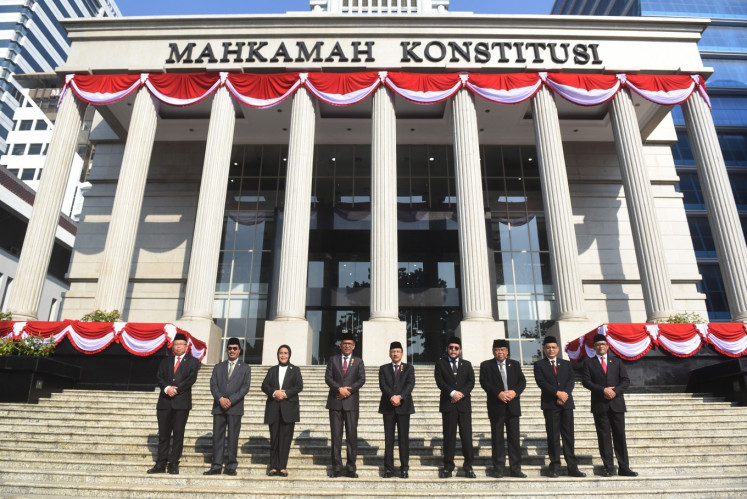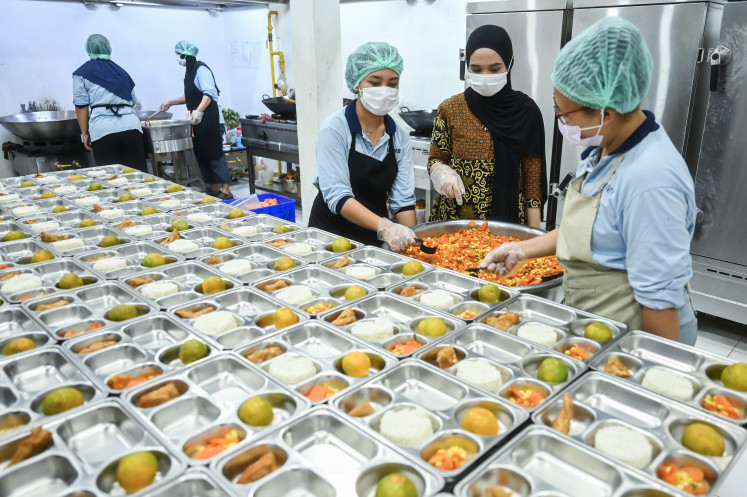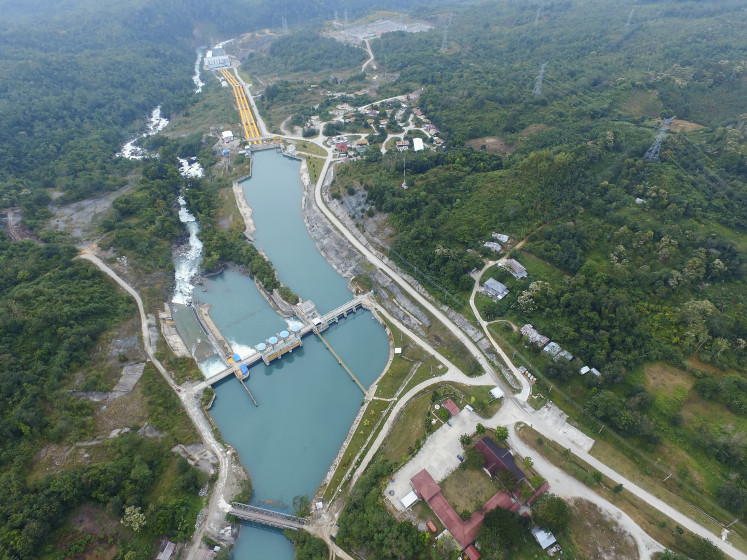Popular Reads
Top Results
Can't find what you're looking for?
View all search resultsPopular Reads
Top Results
Can't find what you're looking for?
View all search resultsInvestment sweetens cocoa industry, builds hub for Asia
The chocolate factory: A worker is seen examining machine-heated cocoa beans at a PT Bumi Tangerang Mesindotama factory in Tangerang, Banten
Change text size
Gift Premium Articles
to Anyone

T
span class="caption">The chocolate factory: A worker is seen examining machine-heated cocoa beans at a PT Bumi Tangerang Mesindotama factory in Tangerang, Banten. JP/R. Berto Wedhatama
Indonesia, the world's third-largest cocoa producer, has seen its cocoa processing industry expand rapidly in the past few years thanks to millions of dollars in new investment by international cocoa manufacturing companies.
The investment is helping to shift the country from being a major exporter of cocoa beans to becoming a supplier of cocoa-intermediary products, such as butter, cake, liquor and powder. This will help Indonesia become a new processing hub in Asia.
Officials and business players attribute the industry's growth to progressive export taxes on cocoa beans ranging from 5 to 15 percent since 2010, which has helped keep raw materials to feed production in the country.
Meanwhile, as much as US$237.1 million has poured in for the construction of local grinding facilities with a combined capacity of 310,000 tons. Four companies investing in the facilities are Asia Cocoa Indonesia ($50 million for a capacity of 120,000 tons), Jebe Koko ($21.5 million for 60,000 tons), Barry-Comextra ($41.6 million for 60,000 tons) and Cargill Indonesia ($124 million for 70,000 tons).

Barry-Comextra, a joint venture between Switzerland-based cocoa and chocolate products maker Barry Callebaut and Indonesia's Comextra Majora, began operating a 30,000-ton-capacity plant in Makassar, South Sulawesi, last September.
Cargill will also follow suit soon by starting commercial operations at its new plant in Gresik, East Java, in August.
The Gresik plant, Cargill's first cocoa processing facility in Asia, will process cocoa beans into cocoa butter, liquor and Cargill's premium quality cocoa powder, Gerkens, to meet demand in Asia, according to Job Leuning, who heads Cargill Cocoa and Chocolate Asia.
'Demand for cocoa-flavored and chocolate products is growing fast in the Asia-Pacific region. We are confident that we will be able to better serve our customers with this new factory,' he said in an email.
Additionally, last month, Singapore-based Olam International Ltd. said it would soon build a $61 million cocoa processing plant in Greater Jakarta. With a capacity of 60,000 tons, it will produce cocoa liquor, butter, cake and high-quality cocoa powders.
Saurabh Suri, Olam's general manager for cocoa, said consumption among Asians had grown in line with their increasing income. This, he said, had created an exceptional growth opportunity for Olam to tap into. According to company estimates, in the next 10 years, cocoa powder demand is set to rise incrementally by 75 percent.
'Establishing a processing facility in the region is, therefore, a strategic move with Indonesia being the perfect location given our long-term investment in sourcing cocoa in the country,' he said in an email.
Collectively, these sizeable expansions have helped push up domestic production capacity from an expected 150,000 tons to 500,000 tons for this year and 600,000 tons for next year, according to Sindra Wijaya, the executive director of the Indonesian Cacao Industry Association (AIKI).
The development of processing plants has also affected the number of raw beans and processed cocoa being shipped overseas, as shown in Trade Ministry data.
In terms of volume, cocoa bean exports dropped to 188,420 tons in 2013 from 432,430 tons in 2010, whereas outbound shipments of processed cocoa doubled to 209,420 tons from 104,260 tons in the same period.
The value of exported beans declined to $446.1 million last year from $1.19 billion in 2010, while sales of processed cocoa rose to $657.42 million from $406.81 million.
There is concern, however, that domestic production may not match growing cocoa bean demand, a condition that may lead to a shortage in the bean supply in the near future.
Production may fall by 6 percent to 425,000 tons this year, its lowest level in eight years, due to bad weather and diseases, the AIKI estimates, making the country source the 75,000-ton shortfall from foreign sources.
As local grinding capacity may hit 600,000 tons next year, imports may soar further to above 100,000 tons, according to the Indonesia Cocoa Association (Askindo), an alliance of cocoa growers and exporters.
Despite much-touted success in the cocoa industry, critics say the gains have been won on the back of export duties that benefit big players and leave behind smaller firms, particularly those with limited innovation, technology and distribution networks.
There are at least six local grinders that have seen their processing capacity remain idle in spite of the ease in sourcing raw materials enabled by the export taxes, according to Askindo chairman Zulhefi Sikumbang.
Apart from this, the export taxes have prevented local growers from taking full advantage of the current high price of cocoa in the global market.
' JP/Linda Yulisman









